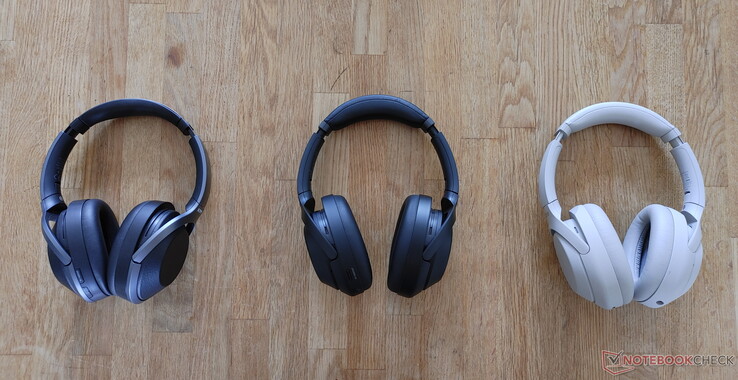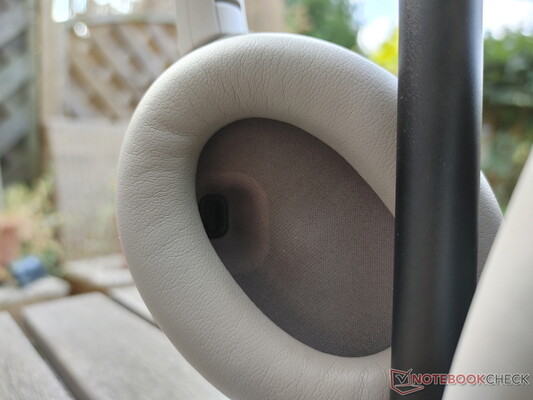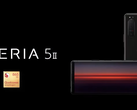Houve quase um intervalo de dois anos entre o lançamento do WH-1000XM3 e do WH-1000XM4 pela Sony. As muitas listas de varejistas que surgiram no início deste ano sugerem que a pandemia mundial provavelmente atrasou um pouco a Sony, mas nós divagamos. Estávamos ansiosos para experimentar o WH-1000XM4 após o lançamento do mês passado, por isso compramos um par dos Silver.
A Sony continua a vender a linha WH-1000XM em duas cores, como vem fazendo há anos. Infelizmente, essa consistência, ou falta de imaginação, dependendo de como você olha para ela, resume o WH-1000XM4. Os fones de ouvido são vendidos no varejo por US$349,99 e £349,99 no Reino Unido, tornando o WH-1000XM4 tão caro quanto o WH-1000XM3. Entretanto, este último custa agora cerca de US$100/£100 a menos do que o último modelo da Sony, o que vale a pena ter em mente se você estiver atualizando a partir de fones de ouvido que não o WH-1000XM3.
Essencialmente, a Sony praticamente não fez nenhuma mudança no design com o WH-1000XM4. A faixa de cabeça é ligeiramente mais grossa do que a do WH-1000XM3, por exemplo, enquanto a Sony renomeou o botão NC/AMBIENTE "Personalizado". Da mesma forma, o mecanismo da dobradiça foi redesenhado, mas estas mudanças só são perceptíveis com o WH-1000XM3 lado a lado para comparação.
Os Top 10
» Os Top 10 Portáteis Multimídia
» Os Top 10 Portáteis de Jogos
» Os Top 10 Portáteis Leves para Jogos
» Os Top 10 Portáteis Acessíveis de Escritório/Empresariais
» Os Top 10 Portáteis Premium de Escritório/Empresariais
» Os Top 10 dos Portáteis Workstation
» Os Top 10 Subportáteis
» Os Top 10 Ultrabooks
» Os Top 10 Conversíveis
» Os Top 10 Tablets
» Os Top 10 Smartphones
» A melhores Telas de Portáteis Analisadas Pela Notebookcheck
» Top 10 dos portáteis abaixo dos 500 Euros da Notebookcheck
» Top 10 dos Portáteis abaixo dos 300 Euros
So, if Sony has not made many external changes in two years, then it must have improved the WH-1000XM4 in other ways? Well, yes and no. On the one hand, the WH-1000XM4 can connect to two devices simultaneously, which is a welcome change from past WH-1000XM series headphones. Sony has also included an IR sensor, which allows the headphones to pause or play automatically if you remove the headphones from your head.
Additionally, the WH-1000XM4 has a "Speak-to-Chat" function that amplifies ambient sounds if you begin talking. In our experience, holding the right earcup to amplify ambient sounds is more intuitive, making Speak-to-Chat feel more like a gimmick than anything else. Likewise, Sony claims that the WH-1000XM4 will automatically power off when not in use. However, the WH-1000XM range has done this since at least the WH-1000XM2, so this is nothing new. Sony has implemented "Precise Voice Pickup" technology too, which uses five of the microphones inside the headphones to optimise call quality. Finally, the WH-1000XM4 supports Bluetooth 5.0, an upgrade from the Bluetooth 4.2 of the WH-1000XM3.
All that sounds promising, but it is poorly implemented. Firstly, the WH-1000XM4 cannot connect to two devices simultaneously over LDAC. Conversely, the equaliser within the Sony Headphones app now works with LDAC, which is handy. Theoretically, the IR sensor should work well, too. However, we encountered multiple issues on Android and Windows 10 where the headphones would do the opposite of what we wanted them to. For example, pausing the WH-1000XM4 when connected to a Windows 10 laptop and removing them for our head caused the headphones to resume whatever was playing. Putting the headphones on again resulted in the music stopping. However, pausing the music manually while the headphones were removed resolved the issue. We only experienced this on iTunes, but it is not something we would expect from US$350/£350 headphones.
Setting that niche gripe aside, Qualcomm aptX and aptX HD have been removed from the WH-1000XM line as Sony has switched to a MediaTek chipset. While this does not post any practical restrictions for Android smartphones or iPhones, macOS and Windows 10 do not support LDAC. Similarly, we could not get the WH-1000XM4 to stream in LDAC on the LG V60, so we had to make do with AAC. We had no issues with the Pixel 4 XL though.
Battery life remains unchanged from the WH-1000XM3, too. This is not necessarily a bad thing as the WH-1000XM3 has exemplary battery life. We would have expected at least some improvements in almost two years, though. Android Authority actually found that the WH-1000XM3 outlasted the WH-1000XM4 by around four hours.
We noticed no discernable improvement in call quality, either. It is a similar case with noise cancellation. Android Authority has demonstrated that the WH-1000XM4 has better noise cancellation at higher frequencies, but we have not been on public transport in the past month to notice a difference. Unquestionably, the WH-1000XM4 has excellent noise cancellation, though.
Verdict - Not worth the two year wait
Overall, the WH-1000XM4 feels somewhat of a sideways step for Sony. The company made some decent improvements from the WH-1000XM2 to the WH-1000XM3, but the same cannot be said for the WH-1000XM4. Perhaps we would feel differently if Sony had released the WH-1000XM4 a year after the WH-1000XM3, but its latest effort feels staid almost two years on from its predecessor.
The features that Sony has added feel half-baked too, like the inability to connect to multiple devices using LDAC. Worse still, Sony is yet to address call quality, one of the worse aspects of the WH-1000XM2 and WH-1000XM3. In our experience, even the Surface Headphones 2 has better call quality than the WH-1000XM4, which is unforgivable considering the gulf in price.
In short, if you already have a pair of the WH-1000XM3, then do not upgrade to the WH-1000XM4. And if you do not own the WH-1000XM3, pick these up instead and save yourself around US$100/£100.
Source(s)
Notebookcheck



















